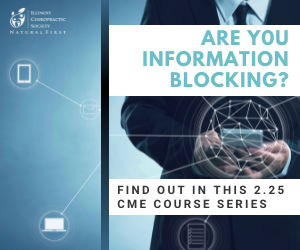
Isthmic Lumbar Spondylolisthesis

The term “spondylolisthesis” is derived from the Greek roots, “spondylo-,” meaning spine, and “listhesis,” meaning to slide. Spondylolisthesis describes a forward slip of a vertebral body with respect to the vertebra below, and is classified by distinct origin:
Type I – Congenital (dysplastic)
Type II – Isthmic (spondylolytic)
Type III – Degenerative
Type IV – Traumatic
Type V – Pathologic
Type VI – Post-surgical
The focus of this paper is Type II- isthmic spondylolisthesis, which is the most common type of spondylolisthesis in young adults. (1,2) Subsequent, the use of the term “spondylolisthesis” will assume an isthmic/ spondylolytic origin.
Lumbar isthmic spondylolisthesis
Lumbar isthmic spondylolisthesis describes a loss of the continuity of the pars interarticularis (spondylolysis), followed by anterior translation of that vertebral body with respect to the vertebra below. (3-8) Bilateral spondylolysis (which precedes isthmic spondylolisthesis) essentially disconnects the anterior vertebral body from the motion-restricting posterior vertebral columns, thereby minimizing the spine’s anatomical defense against anterior translation from sheer stress. (3-9) Isthmic spondylolisthesis is, for all intents and purposes, a stress fracture that has lost continuity. Spondylolisthesis may occur at any spinal level but is most common in the lower lumbar region, with 90% of pars defects occurring at L5. (10,11)
Spondylolisthesis is probable following spondylolysis. Studies have shown that 75% of six-year-olds and almost 50% of elite athletes who have radiographic evidence of spondylolysis also demonstrate some degree of spondylolisthesis. (12,13) Spondylolysis and isthmic spondylolisthesis may be sub-categorized as “active” (type IIA) or “inactive” (type IIC). (14) “Active” refers to an acute process (recent break), which is metabolically active and may retain the ability to heal. “Inactive” refers to a chronic process with little metabolic activity at the site of the break and an unlikely prospect for structural repair.
Etiology
The etiology of spondylolysis/ spondylolisthesis is not completely understood. Defects are thought to occur from a combination of insufficient anatomical strength and repetitive hyperextension. (15) Pars defects often develop before skeletal maturity from a combination of a thinner pars, immature isthmus, and diminished ability of the disc to resist shear stress. (15,16) Isthmic spondylolisthesis is present in approximately 5% of five to seven-year-olds, increasing to 6-7% by age 18. (10,12) The incidence of isthmic spondylolisthesis does not seem to increase significantly after age 18. (11) Slip progression, even during adolescent growth spurts, occurs in less than 4% of cases and is negligible following skeletal maturity. (10,20-25)
The condition affects males at a ratio of 2:1, although females are more susceptible to slip progression. (10) The condition is more than twice in common in whites as compared to African Americans. (10) Over half of Inuits (formerly “Eskimos”) are affected. (17)
The incidence of spondylolisthesis is higher in athletic populations. (13,26) Athletes who participate in sports that require repetitive hyperextension, rotation, and axial loading are at greatest risk. (27) The highest likelihood of spondylolysis/ spondylolisthesis occurs in track & field throwing sports (27%), gymnastics (17%), and rowing (17%). Other at-risk athletic populations include those who participate in: diving, cheerleading, football, wrestling, weightlifting, rowing, track and field, swimming, tennis, and volleyball. (13,26,28-31)
Symptoms
Even though spondylolysis and spondylolisthesis are frequently asymptomatic, these two conditions are still considered the most common cause of persistent low back pain in children and adolescents. (5,7,32-34) Symptoms may be more likely during times of rapid skeletal growth or increased physical activity. (10) Spondylolysis and spondylolisthesis often lie symptomatically dormant until early adulthood. (16) Many experts believe symptoms associated with “inactive” spondylolisthesis arise from secondary dysfunction or unrelated pathology. The mean age for symptom presentation is 20. (36) Isthmic spondylolisthesis is an unlikely primary cause of symptoms for “new” onset back pain in those over 30. (10) The degree of spondylolisthesis does not correlate with the incidence or severity of symptoms. (32)
Patients with spondylolisthesis generally present with insidious onset low back pain that is provoked by activity, especially repetitive extension, rotation, or axial loading. (39-42) Radiation of discomfort into the buttock or thigh is possible. (10,43) Women with lumbar spondylolisthesis may report increased symptoms during the later stages of pregnancy. (10) High-grade varieties of lumbar spondylolisthesis may be associated with instability, even to the point of cauda equina compression. (44) Clinicians should be alert for the presence of saddle numbness/paresthesia, loss of bowel/bladder function, bilateral weakness, impotence, etc.
Clinical Evaluation
Clinical evaluation may demonstrate tenderness to palpation of the involved or superior spinous process. (45) High-grade slips may demonstrate a “step off” deformity between the spinous processes. (45) Range of motion testing often reproduces pain on hyperextension. Patients with isthmic spondylolisthesis may demonstrate some degree of spinal instability during range of motion testing. To assess for instability, the patient should perform standing forward flexion, while the clinician evaluates for catching, disruption of normal lumbopelvic rhythm, and pain while bending or upon return. (1,46) Additional tests to detect the presence of instability include Passive lumbar extension, Prone instability test, and Active straight leg raise test. Having the patient perform prone and supine bridging maneuvers may help assess the endurance of the spinal stabilizers.
Orthopedic assessment should include a One-legged hyperextension test (aka Stork Test), which is performed by simply having the patient stand on one leg and lean backward. Reproduction of pain is associated with a diagnosis of spondylolysis or spondylolisthesis. (47-50) Additional useful orthopedic tests include Kemp’s test, PA shear, Spring test and extension maneuvers, including Yeoman, Nachlas, and Ely. Clinicians should assess for the presence of joint hypomobility in adjacent spinal and pelvic segments. Postural alterations, particularly lower crossed syndrome (hypertonic hip flexors, hamstrings, and lumbar erectors with weakness in the gluteal and abdominal musculature) must be recognized as a contributing factor. Clinicians should perform a neurologic evaluation to screen for deficits.
Imaging
Plain film imaging is appropriate in children or adolescents where there is a higher degree of suspicion for pars defect or in patients who do not respond to a short trial of treatment. Plain films should be the first method of radiographic assessment in cases of suspected active spondylolysis/ spondylolisthesis. (56) Radiographs include AP, lateral, and oblique views. Spondylolysis is best evidenced by oblique views, where it presents as a “collar on the Scotty dog.” The presence of spondylolisthesis on imaging does not necessarily correlate with the patient’s clinical symptoms, especially in “inactive” cases. (56) Clinicians should consider biomechanical factors when assessing lumbar radiographs, including increased sacral base angle and lumbar hyperlordosis. (94)
The degree of anterior translation associated with spondylolisthesis may be graded according to the Meyerding classification, which assesses how many quartiles of the vertebral body have translated forward with relation to the inferior segment: Grade 1 (1-25% slip), Grade 2 (26-50% slip), Grade 3 (51-75%), and Grade 4 (76-100%). (50) A similar method described by Talliard expresses the degree of slip more accurately as a percentage. (i.e. 1-99%) (52,53) “Low-grade” spondylolisthesis refers to slips below 50%, with “high-grade” spondylolisthesis describing slips greater than 50%. (50) Anterior translation of 100% or greater is termed “spondyloptosis.”
The use of flexion-extension views is thought to help further define a spondylolisthesis as “static” (stable) or “dynamic” (unstable). (54,55) However, the diagnostic value of flexion-extension radiographs is uncertain. (56) The merit of flexion-extension radiographs is further mooted by the notion that the mere presence of spondylolisthesis suggests instability. (57) An MRI, CT or SPECT bone scan may help identify whether the spondylolisthesis is active or inactive. Some controversy exists in the literature as to the best method for identifying non-displaced stress fractures (spondylolysis), with various authors preferring CT, SPECT, or MRI. (96-99)
The current standard of imaging spondylolysis patients is as follows: (95,100) When plain films are negative, but a diagnosis of spondylolysis is still suspected, a SPECT bone scan should be performed. A negative SPECT study makes the diagnosis of spondylolysis highly unlikely, and other diagnoses should be considered. If the findings of the SPECT scan are consistent with a Pars lesion, a thin-cut CT (1 mm axial sequences) should be performed through the area of concern to confirm and stage the diagnosis.
Some authors argue for the use of MRI for spondylolysis patients due to the MRI’s lack of ionizing radiation and ability to detect soft tissue diagnoses (i.e., disc lesions). Although MRI may correctly identify the majority of spondylolysis cases, some go unrecognized, particularly “impending stress reactions,” i.e., those without a clear fracture line. (96) MRI is the imaging modality of choice when the patient demonstrates a neurologic deficit. (56) The presence of facet fluid or interspinous fluid on advanced imaging is strongly associated with instability. (54)
Differential Diagnosis
The differential diagnosis for lumbar spondylolisthesis includes fracture, infection, neoplasm, spondylolysis, growth plate fracture, Schuermann’s disease, degeneration, disc lesions, facet syndrome, sprain/strain, myofascial pain syndrome, hip or sacroiliac pathology, and viscerosomatic referred pain.
Treatment
Treatment of lumbar spondylolisthesis is largely determined by whether the condition is active or inactive. Early spondylolysis/ spondylolisthesis is often asymptomatic, and most cases are not identified during their active phase. (58) Spondylolisthesis detected during the “active” phase may initially be managed through a combination of activity modification, bracing, and stability exercise. (59,60) Confirmed “active” spondylolisthesis may require cessation of aggravating activity for up to 2-6 months. Bracing is most effective for active, low-grade spondylolisthesis. (61) Bracing strategies would employ a Boston-type anti-lordotic brace for three to six months. (61,62) One study of adolescent athletes found that 80% had a favorable outcome after wearing an anti-lordotic brace. (63) Adherence to bracing is a challenge for adolescents, and the importance needs to be stressed to the patient and parent. (Anecdotally, braces are expensive and clinicians may consider referral to a pediatric orthopedist if insurance benefits differ.)
Rehab
Rehab of active spondylolysis/ spondylolisthesis would begin with hamstring stretching, progressing toward stability exercises as described below. Follow-up advanced imaging limited to the affected segment after 8-12 weeks will help determine healing status. Referral to an orthopedic spine specialist is a consideration for high-grade spondylolisthesis or more complicated cases.
The vast majority of patients with an “inactive” spondylolisthesis will benefit from conservative care including a combination of activity modification, manual therapy, and exercise. (56,64) Identification and treatment of likely, concurrent “non-spondylolytic” pain generators are essential. Bracing of inactive spondylolisthesis will not result in pars reunion and provides only symptomatic relief. (65) Bracing for inactive spondylolisthesis would only be considered for more advanced cases where symptoms persist despite other conservative measures. (66) Modalities including ultrasound, e-stim, or heat may be used for pain relief. (67-69) NSAIDs may provide additional palliative benefit. (70)
Manipulation
While manipulation of the spondylolytic segment may create greater instability and aggravate the condition (particularly in the prone position), patients may benefit from manipulation of joint restrictions above and below the level of spondylolisthesis. (71,72,80) The use of precise spinal manipulation for patients with inactive spondylolisthesis is appropriate and effective. (72-75,80) One study demonstrated that 80% of patients with spondylolysis responded favorably to spinal manipulation. (72,75) There is, however, no evidence to suggest that spinal manipulation will result in a reduction of anterior translation. Furthermore, if true reduction were possible through manipulation, the vertebral motion segment would not maintain this reduction. (71,76) Clinicians may consider low force alternatives, including flexion distraction (with an abdominal bolster). Soft tissue manipulation and myofascial release techniques may be appropriate for hypertonic muscles, including the lumbar erectors, hip abductors, and hip flexors.
Rehab should be directed at decreasing extension stress and strengthening muscles to promote an anti-lordotic posture. (77,78) Rehab would begin with stretching of the hamstrings, hip flexors, lumbar erectors, and lumbodorsal fascia. (70,77,78) Flexion-based exercise programs demonstrate significantly greater pain relief and long-term improvement versus extension-based programs. (82) Additionally, patients undergoing flexion-based programs require less use of back supports and lower activity limitation/ modification. (83) Home exercise programs would include knee to chest exercises, posterior pelvic tilt, dead bug, piriformis stretches, and abdominal strengthening. Clinicians should be mindful of the presence of lower crossed syndrome and make appropriate exercise recommendations. Proper breathing mechanics have a dramatic effect on lumbar stability, and clinicians must identify and correct dysfunctional breathing patterns to re-establish the proper function. (84,85)
Patients completing a 10-week rehab program, including abdominal and core stability, demonstrate significantly decreased pain intensity with sustained improvement. (86) Clinical predictors for those who will benefit most from lumbar stabilization include age over 40, straight leg raise > 91 degrees, presence of lumbar hypermobility during segmental spring testing, and positive instability tests, including prone instability tests. (87)
Conclusion
Patients may need to be counseled on posture, proper lifting technique, weight loss, aerobic exercise, mattress selection, and sleep position to avoid stomach sleeping. (70) Patients should limit hyperextension movements and avoid wearing high heels. Exacerbations of an inactive spondylolisthesis may require temporary limitation of activities and sports demanding hyperextension or heavy contact (i.e., gymnastics and football). (88,89)
Patients with Grade I spondylolisthesis may return to play when the following criteria are met: full pain-free range of motion, normal strength, appropriate aerobic fitness, adequate spinal awareness of mechanics, and ability to perform sports-related skills without pain. (91) Patients with greater than Grade I slippage should be particularly careful to avoid repetitive loading in hyperextension and may require long-term activity limitations. (10)
Patients with ongoing symptoms who fail a conservative trial of care may benefit from medical and/or surgical consult. Epidural steroid injections may provide benefit for recalcitrant cases. (90) The indications for surgical consultation include: high-grade slip, slip progression, neurologic deficit, and cases that are unresponsive to a prolonged (6month) course of conservative treatment. (16,92,93)
References
1. Haun DW, Kettner NW. Spondylolysis and spondylolisthesis: a narrative review of etiology, diagnosis, and conservative management. J Chiropr Med 2005;4(4):206-17.
2. Earl JE. Mechanical aetiology, recognition, and treatment in spondylolisthesis. Phys Ther in Sport 2002;3:79-87.
3. Kalichman L, Hunter DJ. Diagnosis and conservative management of degenerative lumbar spondylolisthesis. Eur Spine J. Mar 2008;17(3):327-35.
4. Metz LN, Deviren V. Low-grade spondylolisthesis. Neurosurg Clin N Am. Apr 2007;18(2):237-48.
5. Lonstein JE. Spondylolisthesis in children. Cause, natural history, and management. Spine. Dec 15 1999;24(24):2640-8.
6. Esses SI ed. Spondylolisthesis. In: Textbook of Spinal Disorders. Philadelphia, Pa: Lippincott Williams & Wilkins; 1995:203-13.
7. Guanciale AF, Dillin WH, Watkins RG. Back pain in children and adolescents. In. In: Herkowitz HN, Rothman RH, Simeone FA, Balderston RA, eds. The Spine. Vol 1. 4th ed. Philadelphia, Pa: WB Saunders Co; 1999:197-203, 835-85.
8. Sinaki M, Mokri B. Low back pain and disorders of the lumbar spine. In: Braddom RL, ed. Physical Medicine and Rehabilitation. Philadelphia, Pa: WB Saunders Co; 1996:831-3, 844.
9. Herman, M.J., Pizzutillo, P.D., Cavalier, R., 2003. Spondylolysis and spondylolisthesis in the child and adolescent athlete. Orthop. Clin. North Am. 34, 461-467.
10. Perrin AE et al. Lumbar Spondylolisthesis. Medscape.com. Accessed 2/27/14
11. Ganju A. Isthmic spondylolisthesis. Neurosurg Focus. 2002;13:1–6.
12. Fredrickson BE, Baker D, McHolick WJ, et al. The natural history of spondylolysis and spondylolisthesis. J Bone Joint Surg Am 1984;66:699–707
13. Soler T, Calderon C. The prevalence of spondylolysis in the Spanish athlete. Am J Sports Med. 2000:28(1)57-62.
14. Bergmann TF, Hyde TE, Yochum TR. Active or Inactive Spondylolysis and/or Spondylolisthesis: What’s the Real Cause of Back Pain? Journal of the Neuromusculoskeletal System. 2002:10:70-78.
15. Sairyo, K., Goel, V.K., Grobler, L.J., Ikata, T., Katoh, S., 1998. The pathomechanism of isthmic lumbar spondylolisthesis: a biomechanical study in immature calf spines. Spine 23, 1442 -1446.
16. Agabegi SS, Fischgrund JS, Contemporary management of isthmic spondylolisthesis: pediatric and adult. The Spine Journal 10 (2010) 530–543
17. Simper LB. Spondylolysis in Eskimo skeletons. Acta Orthop Scand 1986;57:78-80.
20. Roche MB, Rowe GG. The incidence of separate neural arch and coincident bone
variations: a survey of 4,200 skeletons. Anat Rec 1951;109:233-52.
21. Danielson BI, Frennered AK, Irstam LKH. Radiologic progression of isthmic lumbar spondylolisthesis in young patients. Spine 1991;16:422–5.
22. Saraste H. Long-term clinical, radiological follow-up of spondylolysis and spondylolisthesis. J Pediatr Orthop 1987;7:631–8.
23. McPhee IB, O’Brien JP, McCall IW, et al. Progression of lumbosacral spondylolisthesis. Aust Radiol 1981;25:91–5.
24. Osterman K, Schlenzka D, Poussa M, et al. Isthmic spondylolisthesis in symptomatic and asymptomatic subjects, epidemiology and natural history with special reference to disk abnormality and mode of treatment. Clin Orthop 1993;297:65–70.
25. Frennered AK, Danielson BI, Nachemson AL. Natural history of symptomatic isthmic low-grade spondylolisthesis in children and adolescents: a seven-year follow-up study. J Pediatr Orthop 1991;11:209–13.
26. Rossi F, Dragoni S. The prevalence of spondylolysis and spondylolisthesis in symptomatic elite athletes: radiographic findings. Radiography. 2000:28(1):57-62.
27. Fredrickson, B.E., Baker, D., McHolick, W.J., Yuan, H.A., Lubicky, J.P., 1984. The natural history of spondylolysis and spondylolisthesis. J. Bone Joint Surg. Am. 66, 699e707.
28. Esses SI ed. Spondylolisthesis. In: Textbook of Spinal Disorders. Philadelphia, Pa: Lippincott Williams & Wilkins; 1995:203-13.
29. Guanciale AF, Dillin WH, Watkins RG. Back pain in children and adolescents. In. In: Herkowitz HN, Rothman RH, Simeone FA, Balderston RA, eds. The Spine. Vol 1. 4th ed. Philadelphia, Pa: WB Saunders Co; 1999:197-203, 835-85.
30. Sinaki M, Mokri B. Low back pain and disorders of the lumbar spine. In: Braddom RL, ed. Physical Medicine and Rehabilitation. Philadelphia, Pa: WB Saunders Co; 1996:831-3, 844.
31. Danielson BI, Frennered AK, Irstam LK. Radiologic progression of isthmic lumbar spondylolisthesis in young patients. Spine (Phila Pa 1976). Apr 1991;16(4):422-5.
32. Perrin AE et al. Lumbar Spondylolisthesis. Medscape.com. Accessed 2/27/14
33. Mac-Thiong JM, Duong L, Parent S, et al. Reliability of the Spinal Deformity Study Group classification of lumbosacral spondylolisthesis. Spine (Phila Pa 1976). Jan 15 2012;37(2):E95-102.
34. Tallarico RA, Madom IA, Palumbo MA. Spondylolysis and spondylolisthesis in the athlete. Sports Med Arthrosc. Mar 2008;16(1):32-8.
36. Saraste H. Long-term clinical, radiological follow-up of spondylolysis and spondylolisthesis. J Pediatr Orthop 1987;7:631–8
39. Earl JE. Mechanical aetiology, recognition, and treatment in spondylolisthesis. Phys Ther in Sport 2002;3:79-87.
40. Garry J, McShane J. Lumbar spondylolisthesis in adolescent athlete. J Fam Pract 1998;47(2):145-9.
41. O’Sullivan P. Lumbar segmental instability. Clinical presentation and specific stabilizing exercise management. Man Ther 2000;5(1):2-12.
42. Smith J. Moving beyond the neutral spine: stabilizing the dancer with lumbar extension dysfunction. J Dance Med Sci 2009;13(3):73-82.
43. Jinkins J, Rauch A. Magnetic resonance imaging of entrapment of lumbar nerve root in spondylolytic spondylolisthesis. J Bone Joint Surg Am 1994;76:1643-8.
44. Gatterman MI. Complications of and contraindications to spinal manipulative therapy. Chiropractic Management of Spine-Related Disorders. Baltimore: Williams & Wilkins 1987, pp243–272.
45. Sundell CG, Jonsson H, Adin L, Larsen KH. Clinical examination, spondylolysis and adolescent athletes. Int J Sports Med. Mar 2013;34(3):263-7.
46. Ferrari S, Vanti C, O’Reiley C. Clinical presentation and physiotherapy treatment of 4 patients with low back pain and isthmic spondylolisthesis
J Chiropr Med. Jun 2012; 11(2): 94–103.
47. Logroscino G, Mazza O, Aulisa AG, Pitta L, Pola E, Aulisa L. Spondylolysis and spondylolisthesis in the pediatric and adolescent population. Child’s Nerv Syst 2001;17:644-55.
48. Standaert DC, Herring S, Halpern B, King O. Spondylolysis. Phys Med Rehabil Clin North Am 2000;11:785-803.
49. Syrmou E, Tsitsopoulos PP, Marinopoulos D, Tsonidis C, Anagnostopoulos I, Tsitsopoulos PD. Spondylolysis: a review and reappraisal. Hippokratia 2010;14(1):17-21.
50. Masci L, Pike J, Malara F, Phillips B, Bennell K, Brukner P. Use of the one-legged hyperextension test and magnetic resonance imaging in the diagnosis of active spondylolysis. Br J Sports Med. Nov 2006;40(11):940-6; discussion 946.
52. Taillard W. Le spondylolisthesis chez l’enfant et l’adolescent. Acta Orthop Scand. 1954;24:115–144.
53. Butt S, Saifuddin A. The imaging of lumbar spondylolisthesis. Clin Radiol. 2005;60:533–546
54. Even JL, Chen A, Lee JY. Imaging Characteristics of “Dynamic” versus “Static” Spondylolisthesis. Presentation; AAOS Annual Meeting 2013, Chicago, IL
55. Boden SD, Wiesel SW Lumbosacral segmental motion in normal individuals. Have we been measuring instability properly? Spine1990 Jun;15(6):571-6.
56. Boos N, Aebi M. Spinal Disorders: Fundamentals of Diagnosis and Treatment. Springer ISBN: 978-3-540-40511-5
57. Sevrain, A., Aubin, C.-E., Gharbi, H., Wang, X., Labelle, H., 2012. Biomechanical evaluation of predictive parameters of progression in adolescent isthmic spondylolisthesis: a computer modeling and simulation study. Scoliosis 7, 2
58. Standaert CJ, Herring SA. Spondylolysis: a critical review. Br J Sports Med 2000;34:415 – 422
59. Toto B, Shapiro I. Diagnosis and treatment of spondylolysis in an adolescent athlete. Chiro Sports Med 1995;9(3):100 – 105.
60. Steiner M, Micheli L. Treatment of symptomatic spondylolysis and spondylolisthesis. Spine 1985;19(10):937 –943.
61. Gerszten PC, Tobler W, Raley TJ, Miller LE, Block JE, Nasca RJ. Axial Presacral Lumbar Interbody Fusion and Percutaneous Posterior Fixation for Stabilization of Lumbosacral Isthmic Spondylolisthesis. J Spinal Disord Tech. Sep 29, 2011
62. Kalichman L, Hunter DJ. Diagnosis and conservative management of degenerative lumbar spondylolisthesis. Eur Spine J. Mar 2008;17(3):327-35.
63. d’Hemecourt PA, Zurakowski D, Kriemler S, Micheli LJ Spondylolysis: returning the athlete to sports participation with brace treatment. Orthopedics. 2002 Jun;25(6):653-7.
64. Spine-Health. www.spine-health.com/conditions/spondylolisthesis/spondylolysis-treatment. Accessed 2/27/14
65. S. Terry Canale and James H. Beaty. Campbell’s Operative Orthopaedics: Adult Isthmic Spondylolisthesis 12th edition published by Elsevier
66. Steiner ME, Micheli LJ. Treatment of symptomatic spondylolysis and spondylolisthesis with modified Boston brace. Spine 1985;10:937–43
67. Fellander-Tsai L, Micheli LJ. Treatment of spondylolysis with external electrical stimulation and bracing in adolescent athletes: a report of two cases. Clin J Sport Med. 1998;8:232–234.
68. Pettine KA, Salib RM, Walker SG. External electrical stimulation and bracing for treatment of spondylolysis. A case report. Spine. 1993;18:436–439.
69. Stasinopoulos D. Treatment of spondylolysis with external electrical stimulation in young athletes: a critical literature review. Br J Sports Med. 2004;38:352–354.
70. Agabegi SS, Fischgrund JS, Contemporary management of isthmic spondylolisthesis: pediatric and adult. The Spine Journal 10 (2010) 530–543
71. Mierau D, Cassidy JD, McGregor M, Kirkaldy-Willis WH. A comparison of effectiveness of special manipulative therapy for low back pain patients with or without spondylolisthesis. JMPT. 1987;2:49–55.
72. Cassidy JD, Potter GE, Kirkaldy-Willis WH. Manipulative management of back pain in patients with spondylolisthesis. J Can Chiropr Assoc. 1978;22:15.
73. Rouse JR. Spondylolisthesis: response to chiropractic rehabilitative care. Sports Chiro Rehab. 1996;10:41–43.
74. Beduer ER. Chiropractic treatment of low back and bilateral leg pain caused by L5 retrolisthesis: a case study. Sports Chiro Rehab. 1997;11:15–19.
75. Ventura JM, Justice BD. Need for multiple diagnoses in the presence of spondylolisthesis. JMPT. 1988;11:41–42.
76. Martin-Molina N. Spondylolisthesis with Spinal Stenosis Dynamic Chiropractic – January 25, 2000, Vol. 18, Issue 03
77. Smith JA, Hu SS. Management of spondylolysis and spondylolisthesis in the pediatric and adolescent population. Ortho Clin of North Am. 1999;30:487–498.
78. Soren AWT. Spondylolisthesis and related disorders. Clin Orthop. 1985;193:171–177.
79. Agabegi SS, Fischgrund JS, Contemporary management of isthmic spondylolisthesis: pediatric and adult. The Spine Journal 10 (2010) 530–543
80. Bergmann TF, Hyde TE. Yochum TR, Active or Inactive Spondylolysis and/or Spondylolisthesis: What’s the Real Cause of Back Pain? Journal of the Neuromusculoskeletal System 10:70 – 78, 2002
82. Sinaki M, Lutness MP, Ilstrup DM, Chu CP, Gramse RR. Lumbar spondylolisthesis: retrospective comparison and three-year follow-up of two conservative treatment programs. Arch Phys Med Rehabil. 1989;70:594–598.
83. Gramse RR, Sinaki M, Ilstrup DM. Lumbar spondylolisthesis: a rational approach to conservative treatment. Mayo Clin Proc. 1980;55:681–686
84. Kolar, P., Sulc, J., Kyncl, M., Sanda, J., Cakrt, O., Andel, R., Kumagai, K., Kobesova, A., 2012. Postural function of the diaphragm in persons with and without chronic low back pain. J. Orthop. Sports Phys. Ther. 42, 352-362.
85. Kolar, P., Sulc, J., Kyncl, M., Sanda, J., Neuwirth, J., Bokarius, A.V., Kriz, J., Kobesova, A., 2010. Stabilizing function of the diaphragm: dynamic MRI and synchronized spirometric assessment. J. Appl. Physiol. 109, 1064-1071.
86. O’Sullivan PB, Phyty GD, Twomey LT, Allison GT. Evaluation of specific stabilizing exercise in the treatment of chronic low back pain with radiologic diagnosis of spondylolysis or spondylolisthesis. Spine. 1997;22:2959–2967.
87. Hicks GE, Fritz JM, Delitto A, McGill SM. Preliminary development of a clinical prediction rule for determining which patients with low back pain will respond to a stabilization exercise program. Arch Phys Med Rehabil 2005;86:1753-62.
88. Pizzutillo PD, Hummer CH. Nonoperative treatment for painful adolescent spondylolysis or spondylolisthesis. J Pedriatr Orthop1989;9:538–40.
89. Bell DF, Ehrlich MG, Zaleske DJ. Brace treatment for symptomatic spondylolisthesis. Clin Orthop 1988;236:192–8
90. Vibert BT, Sliva CD, Herkowitz HN. Treatment of instability and spondylolisthesis: surgical versus nonsurgical treatment. Clin Orthop Relat Res. 2006;443:222–227.
91. Lonner BS, Song EW, Scharf CL, Yao J. Reduction of high-grade isthmic and dysplastic spondylolisthesis in 5 adolescents. Am J Orthop (Belle Mead NJ). Jul 2007;36(7):367-73.
92. Kalichman L, Hunter DJ. Diagnosis and conservative management of degenerative lumbar spondylolisthesis. Eur Spine J. Mar 2008;17(3):327-35.
93. Moller H, Hedlund R. Surgery versus conservative management in adult isthmic spondylolisthesis: a prospective randomized study: part 1. Spine 2000;25:1711–5.
94. Sevrain, A., Aubin, C.-E., Gharbi, H., Wang, X., Labelle, H., 2012. Biomechanical evaluation of predictive parameters of progression in adolescent isthmic spondylolisthesis: a computer modeling and simulation study. Scoliosis 7, 2
95. Christopher J. Standaert Expert Opinion and Controversies in Sports and Musculoskeletal Medicine: The Diagnosis and Treatment of Spondylolysis in Adolescent Athletes
96. Liebenson C, Karpowicz AM, Brown SH, Howarth SJ, McGill SM. The active straight leg raise test and lumbar spine stability. PM R 2009;1:530-5.
97. Fujii K, Katoh S, Sairyo K, Ikata T, Yasui N. Union of defects in the pars interarticularis of the lumbar spine in children and adolescents: the radiologic outcome after conservative treatment. J Bone Joint Surg Br 2004;86:225-31.
98. Harvey CJ, Richenberg JL, Saifuddin A, Wolman RL. Pictorial review: the radiological investigation of lumbar spondylolysis. Clin Radiol 1998;53:723-8.
99. Standaert CJ, Herring SA. Spondylolysis: a critical review. Br J Sports Med 2000;34:415-22.
100. Masci L, Pike J, Malara F, Phillips B, Bennell K, Brukner P. Use of the one‐legged hyperextension test and magnetic resonance imaging in the diagnosis of active spondylolysis. British Journal of Sports Medicine. 2006;40(11):940-946.















